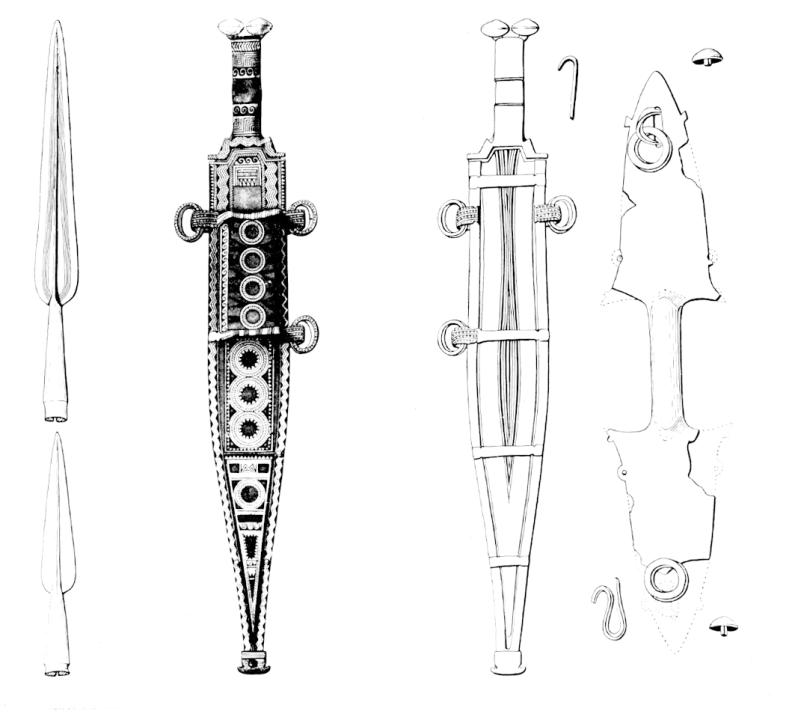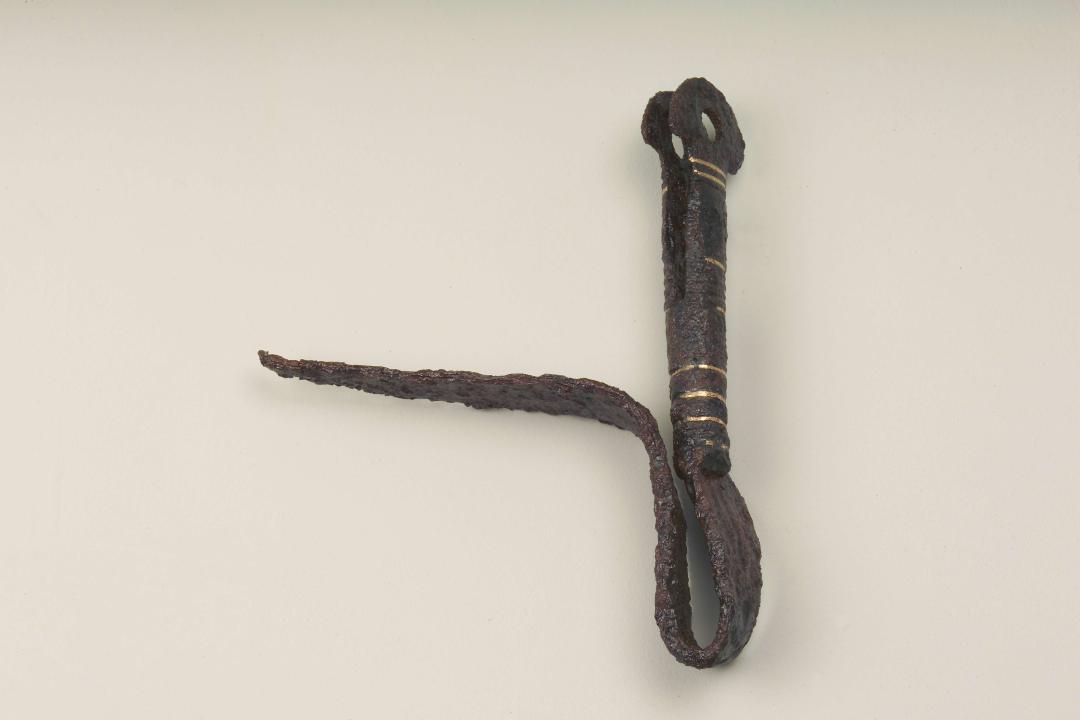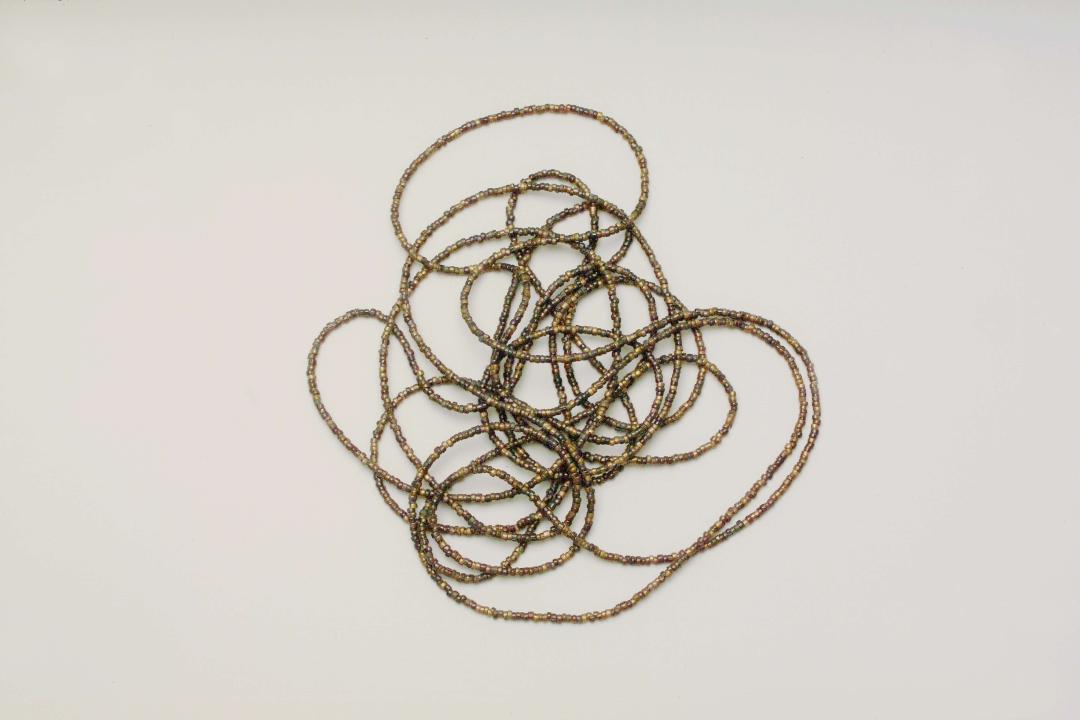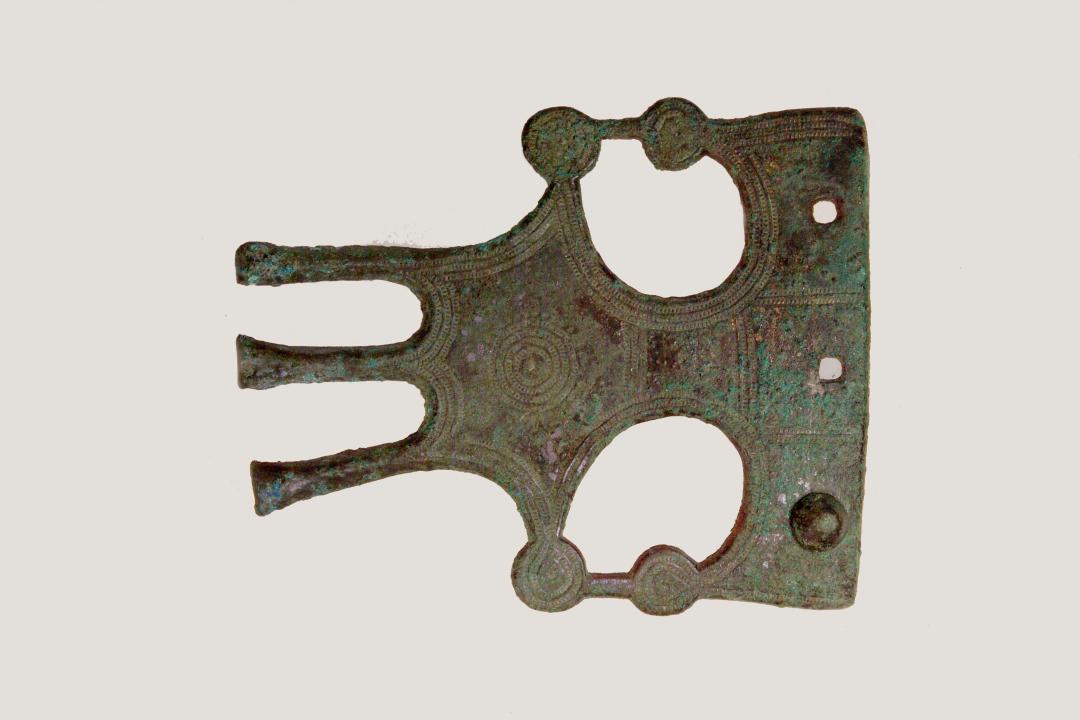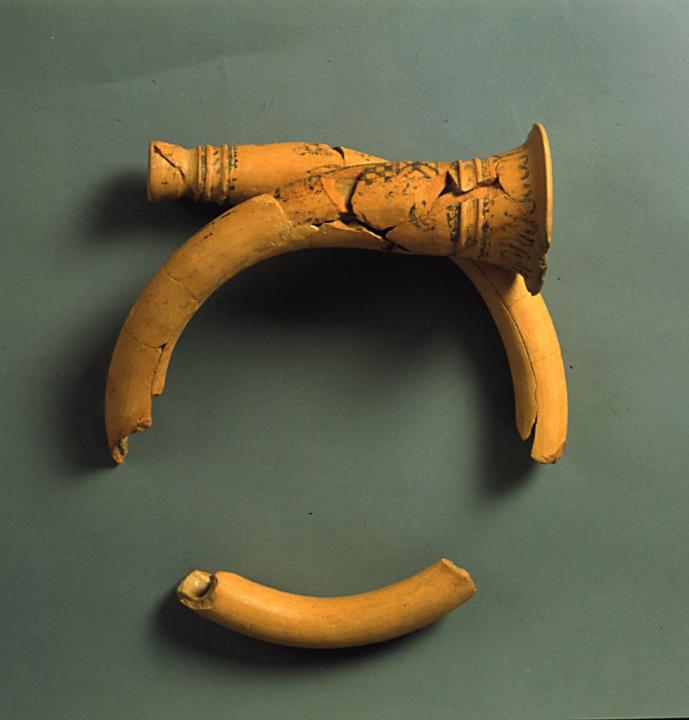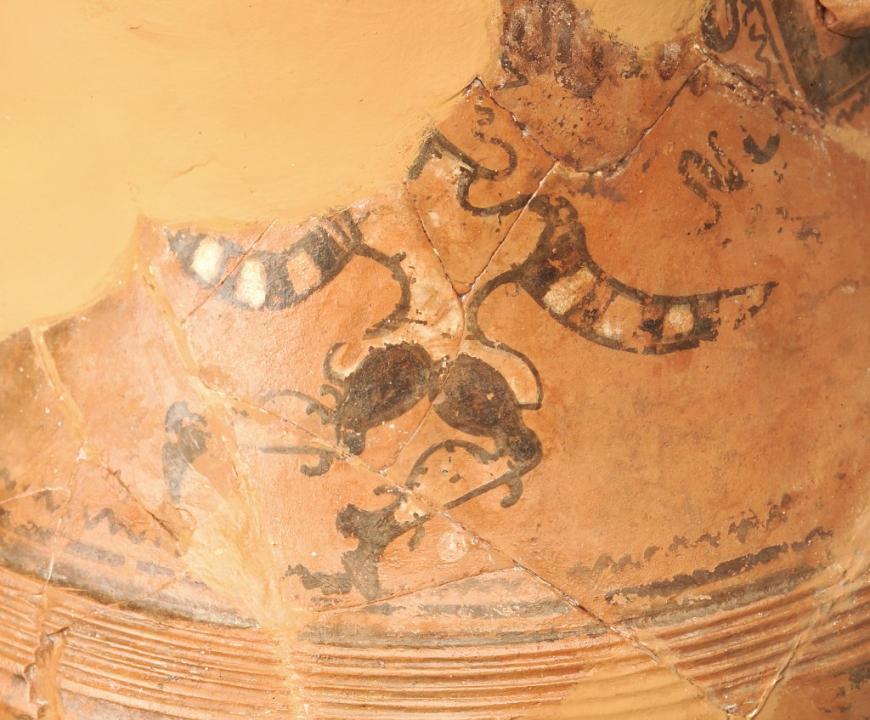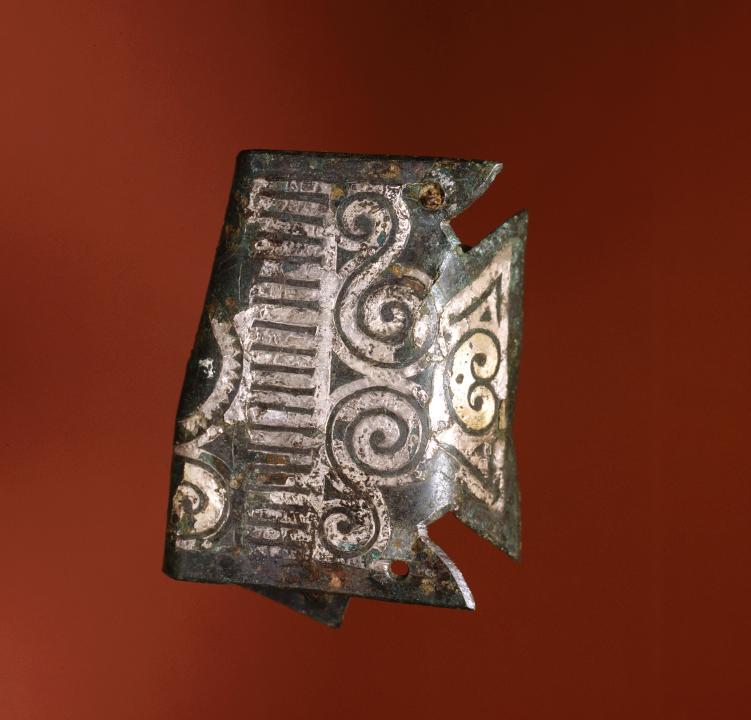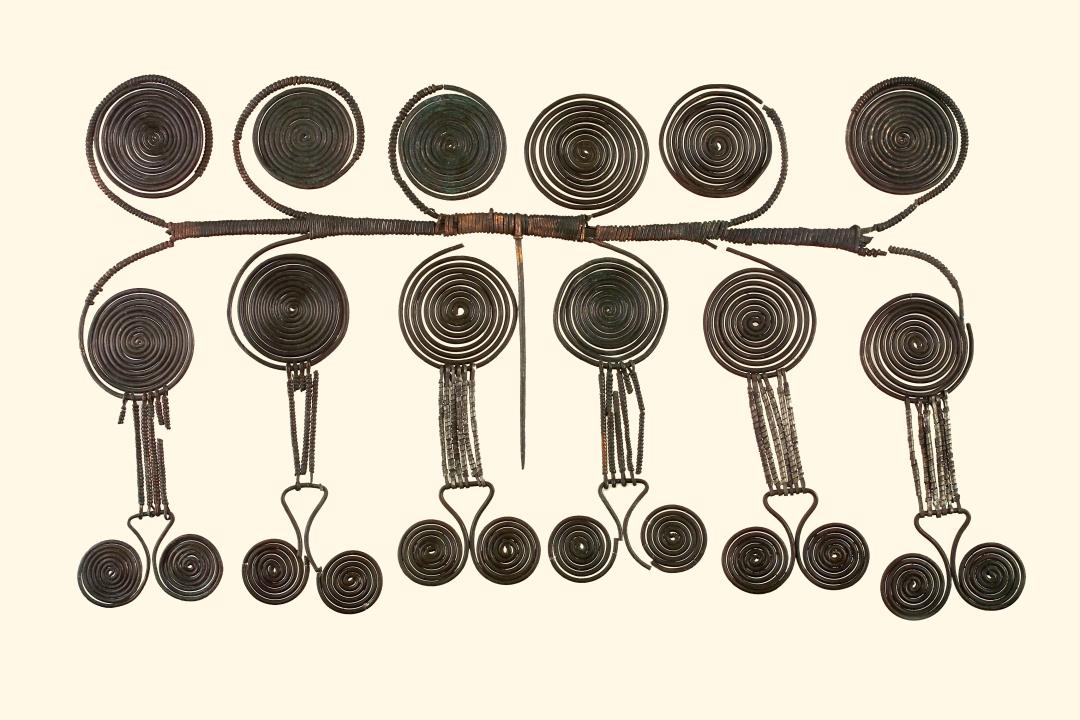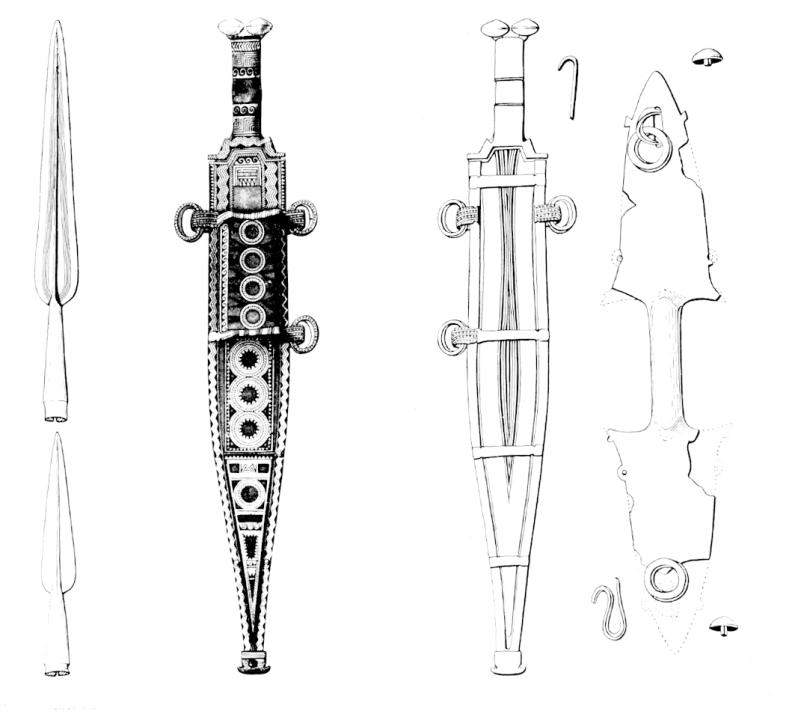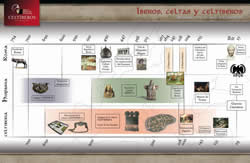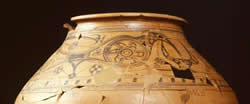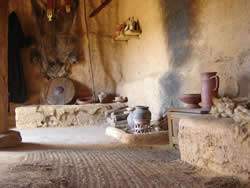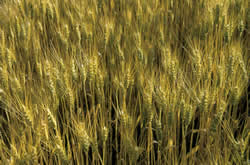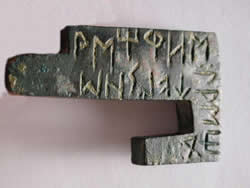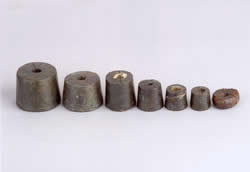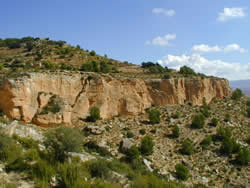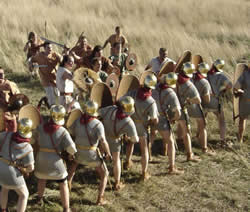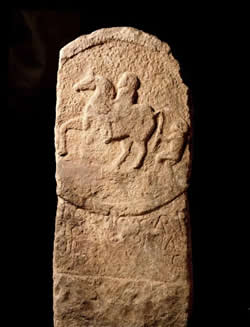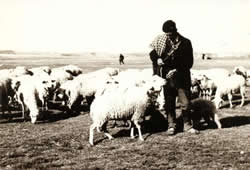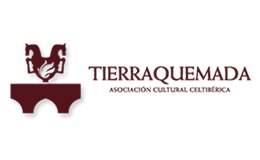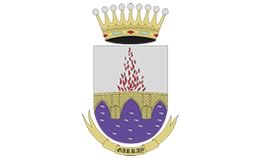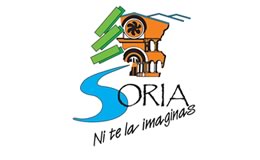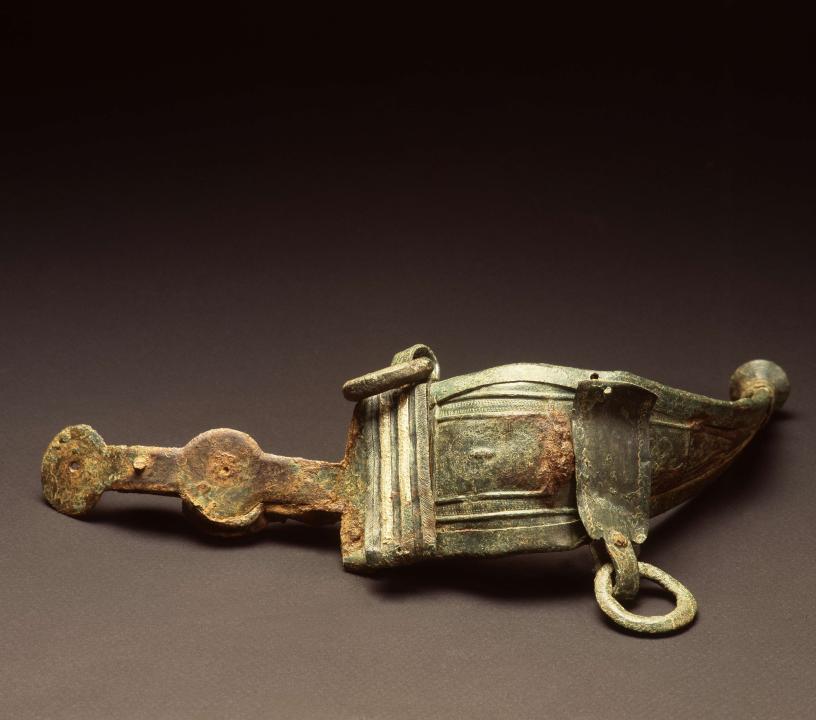

Some art and craft activities such as metallurgy, metalworking and pottery reached high levels of perfection and development in the world Celtiberian, leading to the creation of unique decorative items, weapons and painted ceramic vessels that formed an aesthetic celtiberica.
The "art Celtiberian" is characterized primarily by the work of metal and clay, where noted both for his great knowledge of the various techniques of jewelry (damask, embossed grain and others), and the quality of the ceramics and painting that decorated them. Celtiberian artisans learned to harmonize from the Iberian world influences with Celtic background, while endowed with its own personality pieces. Artistic manifestations reflect an aesthetic marked by the geometry, abstraction and the tendency for small performances. Plus interest to customize both ornaments and weapons in order to socially differentiate individuals who were carrying.
Art, iconography and symbolism of the ceramics
Numancia potters have left us the best collection of ceramics Celtiberian. These include both the quantity and quality of its vessels, as well as a number of features that make it unique: the use of polychrome (red, black and white) and the adequacy of the scenes depicted in the form of vessels, that allowed certain items and decorative compositions are arranged on the walls of jars and vases, in the bottoms of the dishes.
Numancia potters created a style that prevailed in the geometric representations (waves, lines, concentric circles) and schematic that allowed them to show with a few strokes, the outlines of the anatomy of humans and animals.
Numantina ceramics is an important source, since its pictorial decoration helps to document how the Celts were in several respects. Thanks to the rich symbolism of the scenes we know how their rituals (vultures pecking warriors, animal sacrifices), their cosmogony (fabulous creatures half man-half horse) as well as weapons, clothing or the fauna and flora that is worth.
Metallurgy
The iron mines from the Moncayo, Sierra Menera and elsewhere in the Celtiberia was employed for the manufacture of tools and utensils of daily use (scissors, hoes, sickles, knives, etc.) And for the development of weapons . The importance of swords, daggers, spears and shields charged for war, and its use in funerary favored the development of iron metallurgy.
The weapons from the metal workshops became appreciated Celtiberian products, whose excellence and uniqueness were praised even by the Graeco-Latin authors. In addition to its cast, sometimes excellent decorations were made that made them gems of art, especially the sheaths of swords and daggers, due to his painstaking work of damascene, niello silver lace decorations, engravings, die and so on.
The bronze went mainly to the creation of many decorative elements that illustrate the taste for personal adornment had the world Celtiberian. Or safety pins brooches shaped like animals (birds, horses), belt buckles, bracelets, decorative plates or "pecs", bracelets ... All pieces are distinguished by the richness of detail and symbolism as well as the techniques used (damask, granulation, filigree and other). Celtiberian goldsmiths, unlike other parts of the plateau, did not develop a gold jewelry.


